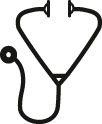Abstract

The global demand for hematopoietic stem cell grafts from unrelated donors (URD) continues to grow despite the COVID-19 pandemic (WMDA report 2021). The pandemic has challenged URD registries to adapt to the changing landscape of SARS-CoV-2 variants. While travel logistics have improved, the Omicron surge, particularly with the BA.5 subvariant, continues to place donors and patients at risk of developing COVID-19. The National Marrow Donor Program (NMDP) and other registries mandated cryopreservation at the beginning of the pandemic and reinstituted a mandate in January 2022 in response to the Omicron surge. NMDP removed the mandate in March 2022 but has continued to strongly recommend cryopreservation for patient safety. In this analysis, we sought to quantify the risk of donors becoming infected with COVID-19 from May 2021, when we began collecting more detailed information, to present (data cutoff 6/30/22).
We quantified the total number of donors testing positive following medical clearance (Table 1). In aggregate, we observed a 2.4-fold increase in the absolute number of donors testing positive following clearance over the first half of 2022, compared to the previous first half of 2021 (53 versus 22). We next analyzed numbers based on age of intended recipients (pediatric vs adult) and graft sources (bone marrow, BM vs. peripheral blood, PB). 57 and 19 donors tested positive prior to planned collection for adults and pediatric recipients, respectively. For BM and PB, the absolute numbers were 22 and 54, respectively.
Given that requests for a fresh product may place recipients at risk for prolonged pancytopenia if a donor tests positive following the initiation of conditioning but prior to graft collection, we quantified the number of donors testing SARS-CoV-2 positive based on whether the transplant center (TC) requested a fresh or cryopreserved URD graft. 33 donors who tested SARS-CoV-2 positive prior to a planned fresh product, compared to 43 donors when cryopreservation was planned. Donor SARS-CoV-2 positivity led to HCT postponement for all patients who had not yet started conditioning. 20 recipients of planned fresh products had already initiated conditioning at the time the donor tested SARS-CoV-2 positive. Of these 20 recipients, 9 eventually received a transplant with the same URD, 1 received a different URD provided by another registry, 1 received a cord blood unit, 4 received a different, but similar in match (8/8 or 7/8) URD, and 5 cases are open (i.e., infusion status unknown/pending).
Realizing donor and staff safety is paramount, NMDP conducted a survey of our network apheresis centers (ACs) and BM collection centers posing a hypothetical question: "Would you collect a SARS-CoV-2 positive donor who was asymptomatic if the recipient had already started conditioning?" Of the 45 ACs responding to the survey, 65% replied no. Of the 32 responding BM collection centers, 50% replied no. Thus, in the majority of cases, an asymptomatic URD would not be collected.
Overall, requests to NMDP for a cryopreserved URD product have varied over the course of the pandemic based on periodic mandates, TC preference, and requested graft source (Figure 1). While <10% of NMDP products were cryopreserved prior to the pandemic, >90% of products have been cryopreserved during the mandate periods (3/23/2020-8/10/2020 and 1/17/2022-3/14/2022). Rates have also varied by graft source: 68% PB products and 27% BM products are currently being cryopreserved. We analyzed practice patterns by TC to determine the degree of variation in requests for fresh versus cryopreserved products. While the median request rate for cryopreserved NMDP products throughout the pandemic is 58%, the lowest quartile included 10 TCs who requested >20 products over the course of the pandemic with cryopreservation request rates ranging from only 19-33%.
In conclusion, the COVID-19 pandemic continues to pose logistical challenges to the NMDP and other global URD registries, particularly during the most recent Omicron subvariant BA.5 surge. TCs ordering fresh products for infusion following initiation of conditioning should be aware of and discuss with patients and inpatient teams the ongoing risk of patients undergoing conditioning without an URD product available for infusion on the day of intended transplantation. These sites should have in place a viable back-up donor plan or stem cell source in the event the intended donor tests positive.
Disclosures
Stefanski:Novartis: Other: Ad Board, Speakers Bureau. Devine:Orca Bio: Consultancy, Other: Payment to NMDP for consulting.
Author notes
 This icon denotes a clinically relevant abstract
This icon denotes a clinically relevant abstract
Asterisk with author names denotes non-ASH members.


This feature is available to Subscribers Only
Sign In or Create an Account Close Modal